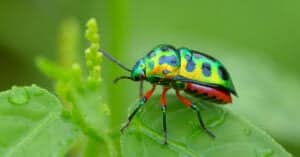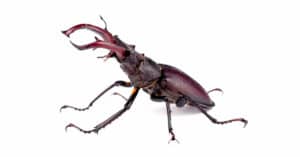Beetles come in all sizes, shapes, and colors. In the United States, there are nearly 30,000 beetle species. And they can range anywhere from red, orange, blue, green, pink, purple, and any other combination you can think of. Some have unique patterns, while others appear like metallic jewels. But what about a black and white beetle? While this contrasting combination can be rare in the animal world, they are not uncommon. Learn about the most common types of black and white beetles, including how to identify them and where they live.
Types of Black and White Beetles
Check out these seven common black and white beetles!
1. Texas Ironclad Beetle

Texas ironclad beetles are used as living brooches in Mexico.
©Jeansmootz / CC BY-SA 4.0 – License
The Texas ironclad beetle is most notable for its blotchy black and ivory body. They belong to the Zopherinae subfamily, which comprises fungivores who feed on rotting wood and have extremely hard exoskeletons. Women in Mexico use this species as living brooches, known as ma’kech in Mexico. The Texas ironclad, specifically, is located in East and Central Texas, where you can find them on American elm trees, feeding on lichen.
2. Hairy Rove Beetle
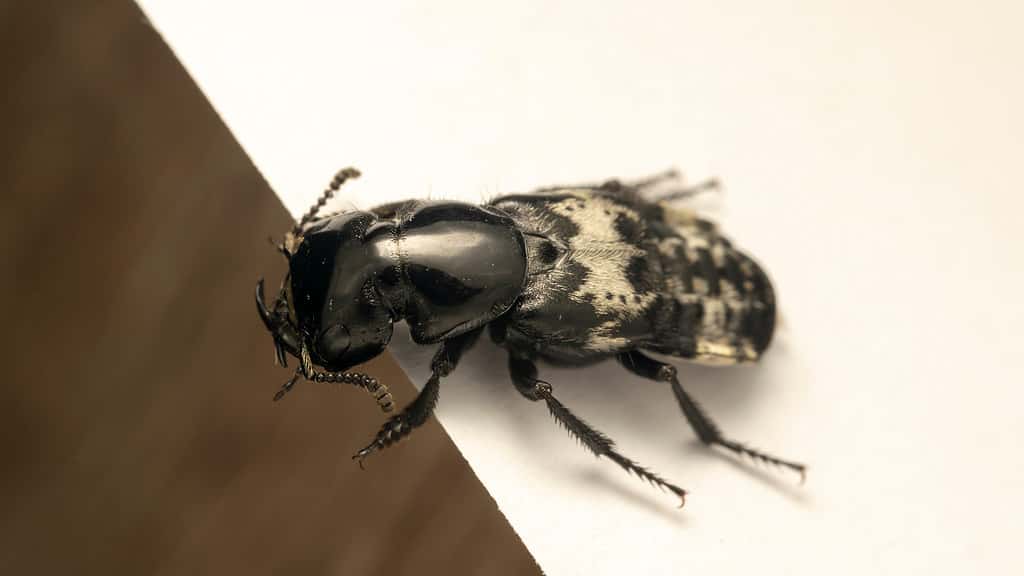
The hairy rove beetle lives in the woods and feeds on carrion. Forensic experts also use it to solve crimes.
©tasnenad/Shutterstock.com
Hairy rove beetles belong to an ancient group, with some fossils dating back 200 million years ago. They belong to the Staphylinidae family and have short wing covers that expose many of their abdominal segments. This species has a black-and-white patterned body and sharp jaws that can inflict a painful bite. They live in woods and feed on carrion (dead animal matter). And they are commonly used in forensic research at crime scenes, where they help investigators establish a time of death. They are most common in the Eastern United States during spring and fall.
3. Eastern Eyed Click Beetle
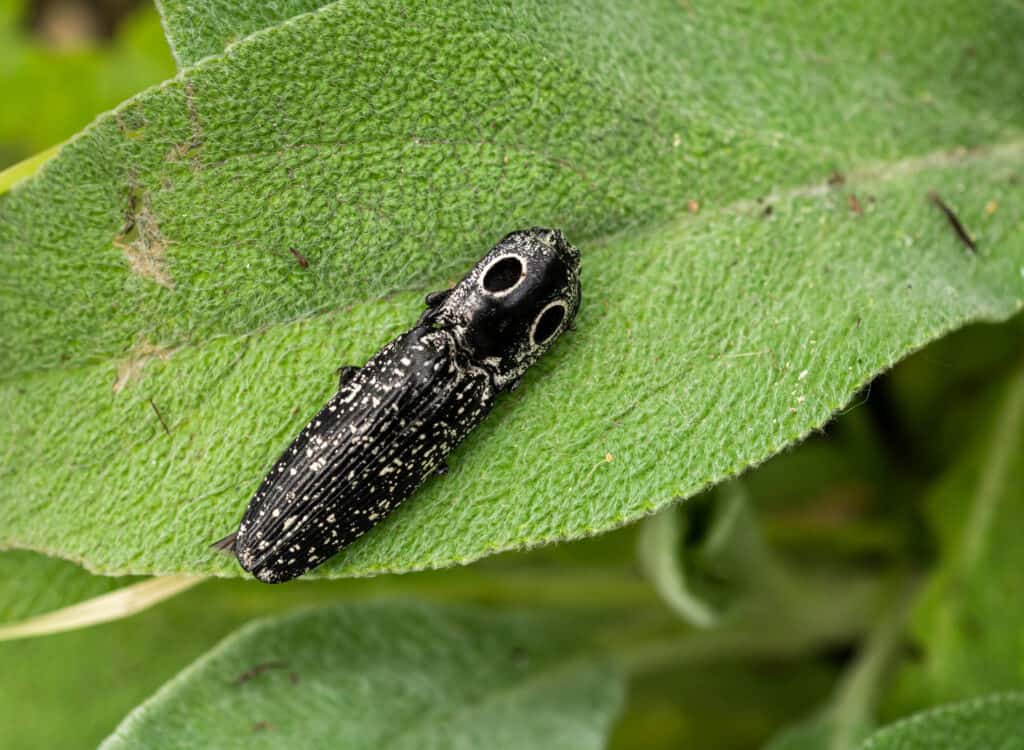
The eyed click beetle (
Alaus oculatus) is characterized by prominent oval eye spots on the pronotum.
©Lee Ellsworth/Shutterstock.com
As a click beetle, this species possesses a click mechanism that can propel it in the air to avoid predation. The eastern eyed click beetle features an elongated shape with black bodies and cream-colored mottling. They feature false eyes, which deter predators and appear on the foremost body segment. This species resides in woodlands and mixed forests throughout North America and Central America.
4. Banded Alder Borer Beetle
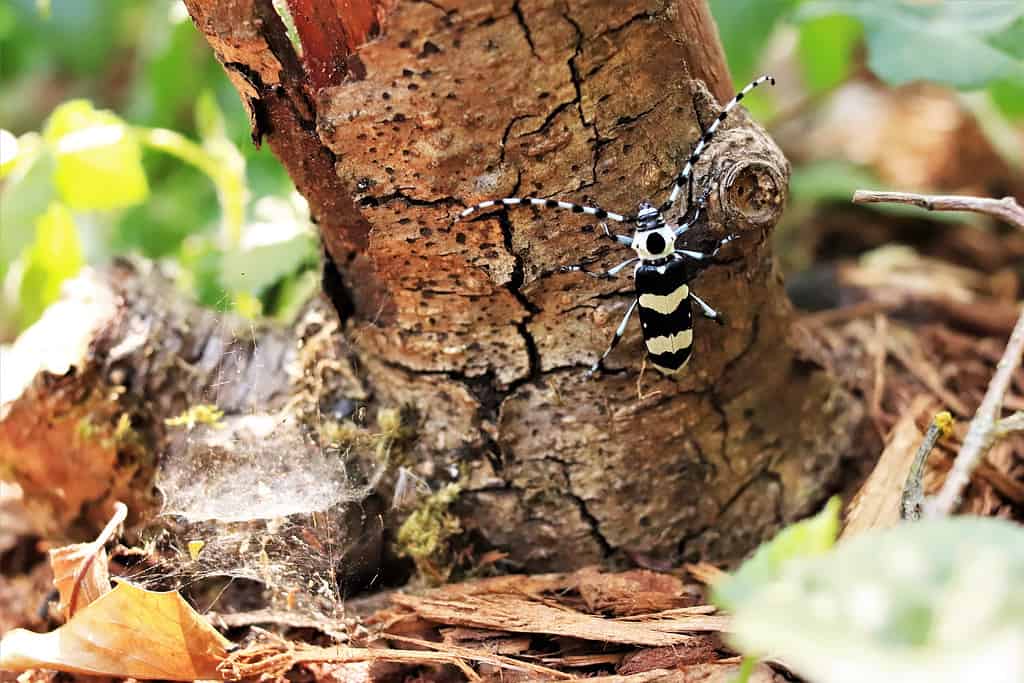
Banded alder borer beetles live in the Western United States on alder trees.
©Indigo 5D/Shutterstock.com
The banded alder borer is a longhorn beetle with very long antennae and deep contrasting black and white striped elytra (wing covers). And their antennae are also banded in black and white. These beetles live in Western North America, from Alaska to Washington and California. Some also live in New Mexico. Named after their favorite tree, you are likely to spot this black and white beetle on alder trees, where they lay their eggs in the bark crevice. These beetles make a hissing noise if you try to handle them.
5. Cottonwood Borer
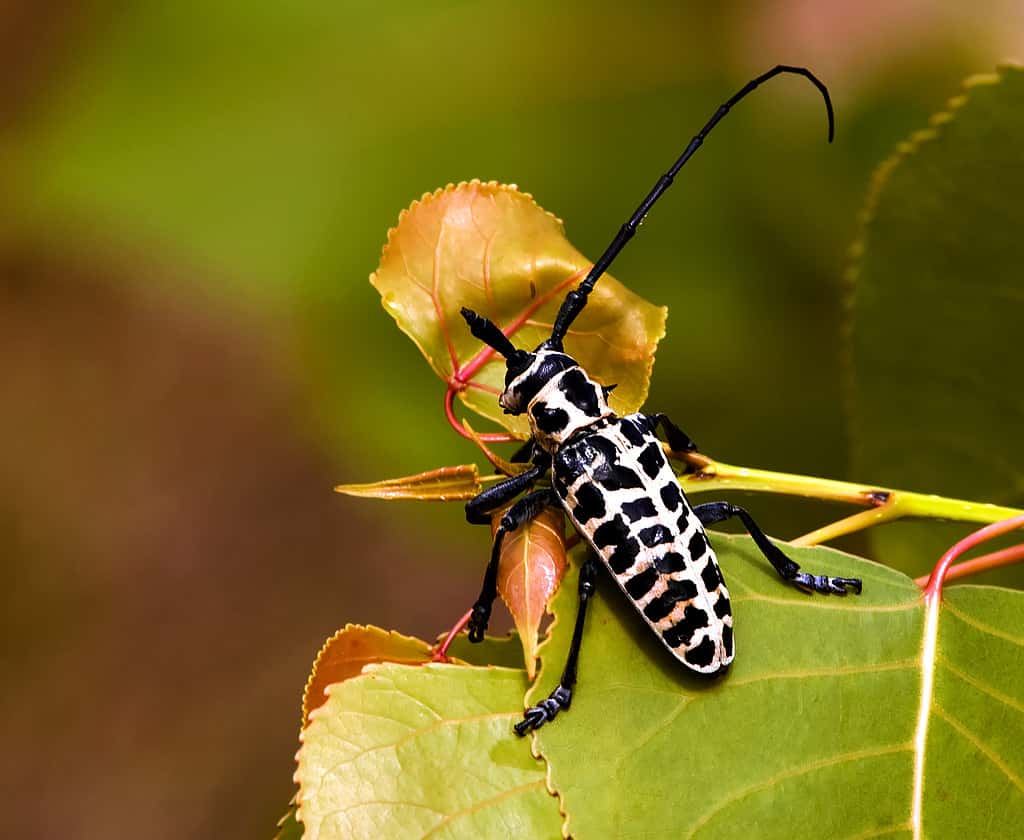
Cottonwood borer beetles infest the roots of living trees, causing environmental damage.
©iStock.com/Michael Clay Smith
The cottonwood borer is another black and white species of longhorn beetle. But instead of alder trees, they feed on cottonwood. They live in the Eastern United States, where they can negatively impact the environment by weakening and killing young trees. These beetles infest a living tree’s roots and bases. They can also hiss and bite if handled. Their patterning is different from the banded alder borer, and they feature all-black antennae.
6. Inflated Beetle

Inflated beetles produced toxic secretions that can kill animals. It lives in Central and North America.
©CC0, via Wikimedia Commons – License
The inflated beetle is a species of blister beetle, which is aptly named for its defensive secretions that can be toxic to animals when ingested. In this case, the inflated beetle’s black and white coloring is used as a warning coloration to fend off predators. Their wing covers appear inflated. And their bodies are black with dense white spots. Their wing covers are also fused, so they are unable to fly. You can find this species in Central and North America.
7. Eastern Beach Tiger Beetle
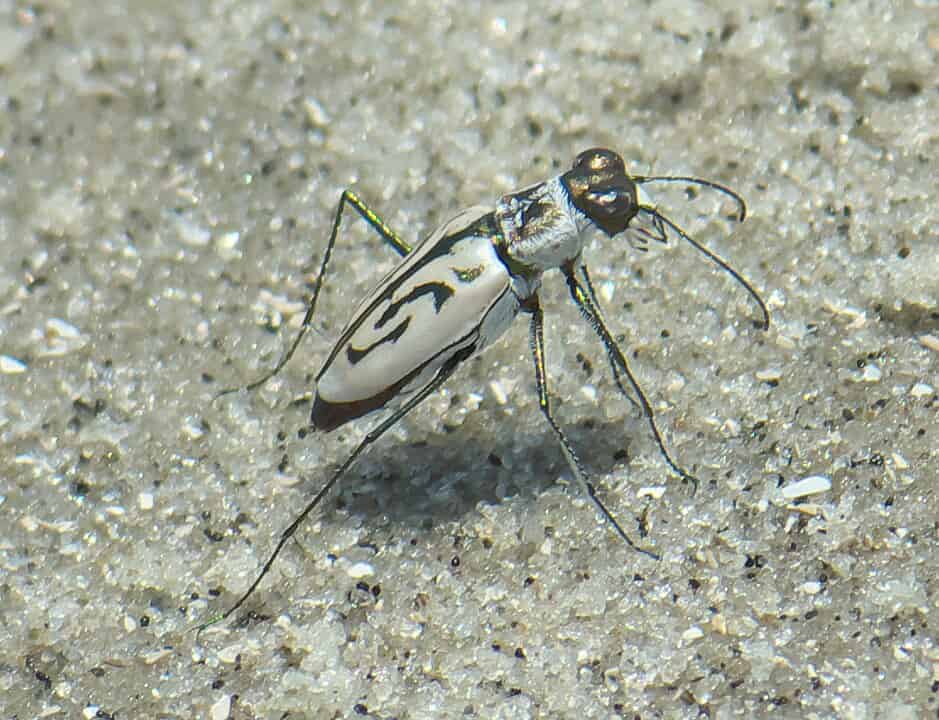
The eastern beach
tiger beetle
has long legs, which it uses to run over five miles per hour.
©CC BY-SA 4.0 – License
As a tiger beetle, this species is an aggressive predator with an impressive running speed topping five miles per hour! They have long, slim legs, large eyes, and elongated bodies. While many tiger beetles can have bright colors, the eastern beach tiger beetle has a paler coloration that allows it to camouflage with its environment. Its legs are black, and its wing covers are white with bronze markings. They live in the sand along the coastline of North America and Central America.
What Do White Grubs Turn Into?
During spring, grubs make their way upward, burrowing toward the roots of grass and resuming their feeding until late May. After this phase, they undergo a transformation into pupae. Adult Japanese beetles typically emerge during the first week of July, while European chafers make their appearance about two weeks earlier.
The majority of white grubs typically finish their development within a single year. These white grub larvae progress into scarab beetles during their adult stages, with some species bearing common names such as June beetles, chafers, and dung beetles.
The photo featured at the top of this post is © iStock.com/Michael Clay Smith
Thank you for reading! Have some feedback for us? Contact the AZ Animals editorial team.



